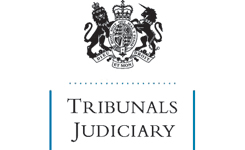|
Notes:
|
Reported as [2011] AACR 36.
Special educational needs – special educational provision – naming school – unreasonable public expenditure – calculation of cost at maintained school
The appellant was the grandmother of a child with special needs. She appealed against the naming of a maintained school in his statement, contending that a specific independent school would better meet his needs. The First-tier Tribunal concluded that either school would meet his needs. Applying section 9 of the Education Act 1996 as amended, it held that it would not be compatible with the avoidance of unreasonable public expenditure to place the child at the independent school in accordance with his grandmother’s wishes. It found that that the annual cost to the local authority of a placement at the independent school would be £14,625 (exclusive of any travel costs) and the annual cost of a placement at the independent school would be £2,899 (the Age Weighted Pupil Unit (AWPU)) plus transport costs of £3,315 per year, having rejected the appellant’s submission that there would be further costs by reason of additional staff being required to meet the child's needs. On appeal to the Upper Tribunal it was contended that the First-tier Tribunal had adopted an erroneous approach to the question of public expenditure. Having considered a number of authorities, including Oxfordshire County Council v GB and Others [2001] EWCA Civ 1358; [2002] ELR 8, Coventry City Council v Special Educational Needs and Disability Tribunal and Another [2007] EWHC 2278 (Admin); [2008] ELR 1 and Slough Borough Council v Special Educational Needs and Disability Tribunal and Others [2010] EWCA Civ 668; [2010] ELR 687, the Upper Tribunal rejected that contention, holding that there was no real inconsistency between Oxfordshire and Slough, and dismissed the appeal. The appellant appealed to the Court of Appeal, contending that the Upper Tribunal had erred in law in its approach to the decisions in Slough and Oxfordshire including in particular, in holding that the First-tier Tribunal did not need to consider the real, full or notional per capita cost to the school of a placement and was concerned only with the marginal cost to the local authority. It was argued that the only proper measure of additional public expenditure was the expenditure of the school, by reference to an analysis of its accounts.
Held, dismissing the appeal, that:
1. there can be “public expenditure” for the purposes of section 9 at either or both stages of the process: when the local authority allocates public funds to the school, and when the school spends those public funds (paragraph 25);
2. Coventry and Slough were rejecting extreme submissions to the effect that the delegated arrangements between the local authority and the schools meant that there was no additional cost to the local authority, and neither case was authority for the broad proposition that the First-tier Tribunal must always focus on the school’s accounts to the exclusion of the local authority’s budgetary arrangements ((paragraph 26);
3. in accordance with the judgment in Oxfordshire the exercise to be carried out by the First-tier Tribunal when calculating the cost to public funds of sending a child to a maintained school was to determine what additional burden would be placed on the local authority's budget (paragraph 28);
4. Oxfordshire and Slough are consistent in that they both demonstrate that the question whether placing a child at a particular school would cause “unreasonable public expenditure” should be approached by the First-tier Tribunal in a common sense manner on the basis of whatever evidence it considers most helpful in resolving this issue in any particular case (paragraph 29, 32);
5. the local authority’s budgetary arrangements for an individual school will usually be a sensible starting point and if those arrangements make provision for the payment of an AWPU to the school there is no reason why the First-tier Tribunal should not accept that the AWPU, together with any additional costs specifically incurred in respect of the child in question, are a fair reflection of the cost to the public purse of educating the child at that school. Examples of such costs were transport costs or the costs of therapy or learning support if an additional therapist or learning support assistant had to be employed by the school, or if an existing therapist or assistant had to be paid to work additional hours (paragraph 30);
6. it should only be in those cases where there is no AWPU payment by the local authority or where the First-tier Tribunal is satisfied that, for some cogent reason, the AWPU plus any additional costs do not fairly reflect the cost to the public purse of placing the child in a particular school, that the First-tier Tribunal would consider it necessary to adopt some other method of calculating the public expenditure involved in that placement for the purposes of section 9 (paragraph 31).
|
